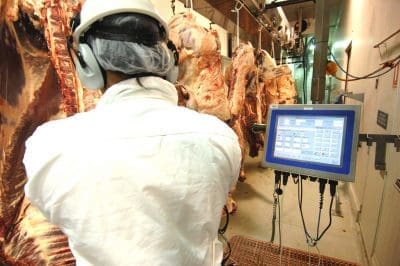ALL eyes this week are on the prospects of Cyclone Kirrily disrupting processing operations across Queensland over the next ten days or so.
The cyclone threat, together with the holiday-shorted week for Australia Day on Friday has also stopped phones ringing for cattle bookings in Queensland this week, processor contacts said this morning.
 “Nobody’s really in a mood to commit cattle for kills next week, until they find out what’s happening with the cyclone,” one cattle buyer contact said.
“Nobody’s really in a mood to commit cattle for kills next week, until they find out what’s happening with the cyclone,” one cattle buyer contact said.
“We don’t know until it happens, but at this stage the impact on beef processing heading into February could be quite significant, in terms of wet paddocks and impassable roads making cattle movements difficult.”
In reports this morning from BOM, the tropical low off the coast of Queensland is expected to develop into Cyclone Kirrily by tomorrow morning. The bureau is anticipating the cyclone to then downgrade into a tropical low as it travels inland by Friday night into Saturday.
Some forecasts have falls of 200-500mm being dumped on parts of Central and northern Queensland in coming days, which would seriously disrupt beef processing operations if it proves accurate.
Large export beef plants from Townville to Mackay, Rockhampton and Biloela are likely to be most heavily impacted, but operators further south are also anticipating challenges in cattle supply into early next week, especially if the rain drifts into the state’s interior.
At least one plant in Central Queensland that has not yet started its 2024 season is now contemplating delaying the start to operations until after the Cyclone threat has passed.
Grids continue to strengthen, but response has been slow
Despite some hefty rises in direct consignment slaughter cattle offers during January, many processors are still struggling to attract business, with a big body of green grass meaning many producers are content to sit back and add more weight before making marketing decisions.
Some Queensland and southern Australian grids have lifted again this week, with some of the adjustments made to keep operators competitive with others.
Grids seen this morning have good quality heavy cows in southern Queensland at anywhere from 480-495c and four-tooth heavy steer 530-560c/kg. Some of those offers are up 10-30c on the previous week, and are now 70-90c/kg higher than closing rates in 2023.
Spot MSA grain steer was making 610c/kg this morning, while some certified grassfed MSA programs in Queensland are now offering 560c/kg.
Central Queensland offers are 10c behind those figures, while southern states are fully-firm, if not a little higher than Queensland. One southern NSW plant has offers this morning at 555c for PR ox and 510c on good heavy cows, and in South Australia 550c for four-tooth ox and 510c top cell on cows.
As discussed in a separate article this morning, there’s also been a run of spot 100-day grainfed cattle in the market over the past week. One processor said he had been picking up runs of 300-400 spot-market fed steers here and there.
The most plausible explanation for the rise is lotfeeders late last year electing not to take forward contracts (at that time around 570-580c/kg for February delivery), and taking a punt on feeding them without a price attached.
While the result could have worked out very differently if seasonal conditions had stayed dry, for those who took the risk the outcome has been positive. Spot 100-day grain cattle today in Queensland are making 590-620c, representing a $150 advantage on a typical grainfed steer over what he would have made under a February delivery contract.
Saleyards trend higher
Saleyards prices have continued to trend higher this week, with a yarding of 5500 at Roma this morning typically up another 10-15c, buyers attending the sale said.
Gunnedah sale this morning yarded 2250 head, with producers taking the opportunity to offload into a market that has shown strong improvement in recent weeks. Medium and heavy weight yearling feeder steers saw a dearer market trend with strong demand from northern feedlots. Medium weights were up to 13c/kg dearer while the heavy and extra heavy weights saw a trend of as much as 12c dearer with little breed related price variation on the good quality lines.
The well finished slaughter types attracted keen demand and sold to a slightly dearer trend. Processors were active on all classes of cows with the market showing dearer trends, with well-finished heavyweights as much as 15c/kg dearer.



HAVE YOUR SAY